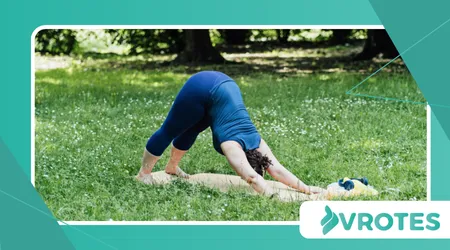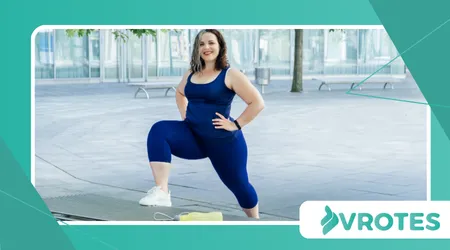Low-Impact Cardio Options for Hot Flash Management

Low-Impact Cardio Options for Hot Flash Management are essential for women navigating the often-challenging terrain of menopause.
Annonces
This transitional phase brings hormonal shifts that frequently manifest as vasomotor symptoms, most notably hot flashes.
These sudden, intense feelings of heat can disrupt daily life, compromise sleep, and diminish overall well-being.
Regular physical activity is a well-documented non-pharmacological strategy for improving quality of life during menopause.
However, high-intensity exercise, which significantly raises core body temperature, might inadvertently trigger or exacerbate these temperature surges.
Annonces
The key lies in strategic movement, focusing on cardiovascular exercises that elevate the heart rate without overheating the system.
Why Does Cardio Help Manage Hot Flashes?
It might seem counterintuitive to exercise when you are trying to avoid an internal heat wave, but regular moderate activity is highly effective.
The body’s ability to regulate temperature often becomes less efficient during menopause, a function directly tied to the hypothalamus.
Consistent cardio training strengthens the body’s thermoregulatory control system.
Think of your body as a high-performance sports car: regular maintenance and intelligent driving keep the engine running smoothly.
En savoir plus: Comment ajuster le HIIT aux fluctuations du niveau d'énergie
Exercise acts as that necessary maintenance, essentially recalibrating the internal thermostat.
By improving cardiorespiratory fitness, you enhance the body’s capacity for heat dissipation.
Does High-Intensity Exercise Make Hot Flashes Worse?
High-intensity workouts, while excellent for cardiovascular health, can be a double-edged sword for women prone to hot flashes.
The rapid and significant increase in core body temperature experienced during vigorous exercise can be a direct trigger for a vasomotor response.
Voyez comme c'est intéressant : Routines de marche pour la clarté mentale
This is why many women who run or participate in HIIT classes report immediate post-workout flushing.
The goal should be to find the intensity sweet spot. This means a moderate effort that challenges the heart without causing a rapid, uncomfortable temperature spike.
The focus shifts from “go hard” to “go smart and steady.”

What Specific Low-Impact Cardio Options for Hot Flash Management Are Best?
Selecting the right activity is crucial for an effective and sustainable regimen.
The ideal exercises are joint-friendly and allow for easy control over exertion levels, minimizing rapid core temperature elevation.
These activities should be integrated consistently throughout the week.
- Swimming and Water Aerobics: This is arguably the gold standard. Water’s inherent cooling effect prevents the core temperature from rising too quickly, making it incredibly comfortable. It provides resistance for strength benefits without impact.
- Cycling (Outdoor or Stationary): Cycling allows for a self-paced, rhythmic workout. Using a fan while on a stationary bike, or choosing cooler outdoor times, provides excellent environmental control.
- Brisk Walking: A simple, yet powerful option. Walking at a pace that increases your heart rate but still allows for conversation (the “talk test”) is ideal. This moderate effort reduces fatigue while improving circulation.
- Elliptical Training: This machine provides a full-body, weight-bearing exercise that’s very gentle on the joints, mimicking running without the impact. Many offer built-in fans for added comfort.
How Does Cardiorespiratory Fitness Affect Hot Flash Frequency?
Research consistently supports the notion that improved fitness can lead to a quantifiable reduction in hot flash frequency.
In a landmark 2016 study published in the journal Ménopause, researchers investigated the effect of exercise training on symptomatic postmenopausal women.
Regardez ça : Le poids émotionnel du désordre sur le subconscient
The study concluded that exercise training that successfully improves cardiorespiratory fitness reduces self-reported hot flashes.
Specifically, the women in the exercise group reported a significant decrease in weekly hot flash frequency compared to the control group.
This improvement is believed to be mediated by enhanced thermoregulatory control.
| Low-Impact Cardio Option | Primary Benefit for Hot Flashes | Control Over Intensity | Exemple |
| Natation | Constant cooling effect on core temperature | Haut | 30 minutes of breaststroke or front crawl |
| Marche rapide | Minimal core temperature spike; easy to self-regulate | Haut | A 45-minute power walk in the park |
| Vélo | Airflow from movement aids in cooling | Haut | Indoor spin class with fans or a relaxed outdoor ride |
| Elliptical | Low-impact, full-body movement | Modéré à élevé | Interval bursts for 1 minute followed by 2 minutes of recovery |

Intégration Low-Impact Cardio Options for Hot Flash Management dans votre routine
For best results, aim for at least 150 minutes of moderate-intensity cardio each week, which aligns with standard health guidelines. The timing of your workouts is also crucial.
For example, some women find that exercising in the late evening, especially a vigorous activity, can interfere with sleep and potentially trigger nighttime hot flashes.
Consider a morning or mid-day workout to allow the body time to cool down before bed.
As an original example of smart integration, consider this: instead of a single, grueling 60-minute session, divide your activity into two 30-minute blocks.
A brisk morning walk before the sun is high and a cooling water aerobics class in the late afternoon.
This strategy keeps the body moving without prolonged exposure to internal heating.
Statistically, studies show that nearly 80% of women experience hot flashes during the menopausal transition, underscoring the universal need for effective management strategies.
Therefore, integrating regular, moderate exercise is not a luxury, but a necessity.
Is the constant discomfort of unpredictable heat surges not enough motivation to implement a smarter exercise strategy?
Another example involves cross-training. For someone who enjoys outdoor activity, cycling on a trail is great.
However, on a humid day, the body struggles to dissipate heat. The smart switch is to move the activity indoors to a fan-cooled stationary bike or an elliptical. This flexibility is key.
The journey through menopause is like sailing a ship through changing seas. You can’t stop the tide of hormonal change, but you can adjust your sails.
High-impact activity in the heat is like trying to sail directly into a storm with too much canvas up—it’s exhausting and dangerous.
Low-impact, temperature-controlled cardio, on the other hand, is the judicious reefing of the sail, allowing you to maintain speed and direction with less effort and more stability.
This is the essence of smart movement during this phase.
Ultimately, choosing Low-Impact Cardio Options for Hot Flash Management allows women to seize control of their physical well-being.
They can foster enduring cardiovascular health and enhance thermoregulation without repeatedly inviting the very symptoms they seek to conquer.
It is about working in partnership with your body’s changing needs.
Embracing Intelligent Movement
The evidence is clear: moderate, consistent physical activity is a powerful tool against the pervasive discomfort of hot flashes.
By choosing appropriate Low-Impact Cardio Options for Hot Flash Management, such as swimming or cycling, women can improve their cardiorespiratory fitness and enhance their body’s ability to regulate its own temperature.
This intelligent movement approach facilitates not only symptom reduction but also promotes long-term health and vitality during this significant life transition.
Making the shift to low-impact, temperature-controlled exercise is a definitive act of self-care and empowerment.
Questions fréquemment posées
Can I still do strength training while managing hot flashes?
Absolutely. Strength training is vital for bone health during menopause.
Pair it with low-impact cardio and focus on managing the environment, such as cooling the room and drinking cold water, to avoid overheating.
Should I exercise if I am currently having a hot flash?
Generally, it is best to pause, cool down, and wait until the flash passes. Continuing intense exercise might prolong or intensify the episode.
Opt for a cool drink and deep breathing until you are comfortable resuming.
How quickly will low-impact cardio reduce my hot flashes?
The thermoregulatory changes are gradual.
While some women report feeling better immediately due to stress reduction, a noticeable reduction in frequency and severity often takes several weeks of consistent training, typically 4 to 12 weeks.
